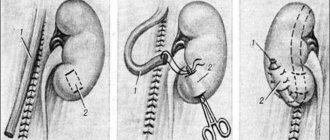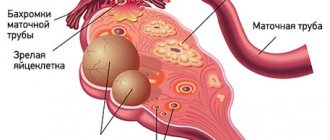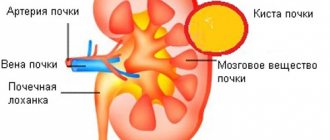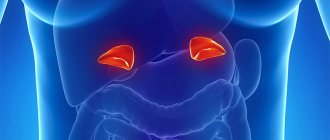Laparoscopy is a surgical procedure in the abdominal cavity. When using this term, they mean an extensive list of manipulations of a diagnostic and therapeutic nature. Such procedures are carried out in the abdominal cavity as gentle surgical intervention to remove a kidney cyst, for kidney cancer, for varicocele, and also for medical procedures for organ prolapse. Treatment and diagnosis are carried out using endovideo cameras, as well as specialized equipment and tools.
Our doctors
Diagnostics and treatment of urological pathologies using laparoscopy
Laparoscopy in urology is performed by puncturing the abdominal wall. Cannulas (aka ports) are inserted into these openings in the abdominal cavity, with the help of which an endoscopic camera and special instruments are inserted. The required amount of carbon dioxide is injected into the abdominal cavity to create space for manipulation in the abdominal cavity.
Surgeons using the laparoscopy method see organs and their structure enlarged up to 30 times. This makes it possible to carry out absolutely accurate diagnostics and perform endoscopic operations in the field of urology, gynecology, etc. Endoscopic equipment sends HD quality images.
Laparoscopic treatment is a high-tech method in the field of surgical operations. During this type of intervention, all methods of dissection are used:
- The fabric is connected;
- Stop all kinds of internal bleeding;
- Endoscopic prosthetics are performed;
- Ultrasound and water jet methods of atomic diagnostics and treatment of organs will be used.
Advantages of laparoscopy diagnostics and treatment in the field of urology
There are undeniable advantages of laparoscopy compared to other surgical methods:
- After the laparoscopy procedure, the patient quickly undergoes a rehabilitation period. Approximately 3 times faster than strip surgery;
- During laparoscopy, much less anesthetics and painkillers are prescribed, since the pain is moderate. Strong narcotic drugs, as a rule, are not used. This is a gentle method of surgical intervention for urological diseases and other pathologies of the abdominal cavity;
- After laparoscopy, there are no traces left, so the cosmetic result is excellent;
- The likelihood of adhesions is minimized, this is important, since the adhesions process causes intestinal obstruction with acute painful manifestations;
- After laparoscopy, the formation of ventral hernias is almost impossible;
- Suppuration in the operated area after laparoscopy is minimized.
A small list of disadvantages of this method
- Laparoscopy uses high-tech expensive equipment, so this method of surgical intervention is more expensive. But, if we take into account the patient’s disability after strip surgery, as well as the costs of recovery from complications that often arise with open surgery, then laparoscopy is not so expensive;
- To work in the field of laparoscopy diagnostics and treatment, we need educated, specially trained medical personnel.
Laparoscopy in urology is very widely applicable.
Department of Urology
Considering the multidisciplinary nature of the specialized department of the Federal Scientific and Clinical Center of the Federal Medical and Biological Agency of Russia, it has a powerful laboratory and diagnostic base that meets all the requirements of modern urology. Namely: any tests within 24 hours, ultrasound and X-ray diagnostics using expert class equipment, multislice computed tomography and magnetic resonance imaging of the genitourinary system. Full functional diagnostics, radioisotope diagnostic laboratory - all this is available to our patients. This allows you to quickly establish the correct diagnosis and choose the optimally effective treatment tactics for urological diseases. Providing highly qualified medical care for planned and emergency urological conditions is a high-quality standard of work for the department’s staff.
The department conducts research work and conducts international multicenter clinical studies.
The department's fund is 30 beds for round-the-clock stay, located on the 10th floor of the main building. All conditions have been created for a comfortable stay in 1, 2 and 4-bed wards. Each room has an individual bathroom and household amenities (TV, air conditioning, landline telephone, refrigerator, cutlery and teaware, etc.)
Priority directions
Providing accessible and high-quality medical services at a high level with the goal of restoring health to our patients is the most important task in the work of the urology department of the Federal Scientific and Clinical Center of the Federal Medical and Biological Agency of Russia.
The priority areas of activity of the urology department are high-tech operations on the organs of the genitourinary system. The main emphasis is on minimally invasive surgical interventions for various urological diseases. The vast majority of operations on the urinary system in the department are performed using minimally invasive (low-traumatic) endoscopic methods. This type of endoscopic urological surgery differs from traditional, “open” surgery in that it is performed either through natural routes, for example, the urethra (transurethral, retrograde). Or through skin puncture (percutaneous, antegrade) interventions on the kidneys and upper urinary tract. Another option for fully replacing “open” surgery with minimally invasive surgery is laparoscopic interventions (“keyhole surgery”), a situation where instruments are inserted into the abdominal cavity through small punctures-incisions on the abdominal wall. After which, having excellent visualization in HD or 3D quality and a set of the most modern instruments and equipment, a team of doctors performs operations on the organs of the abdominal cavity, retroperitoneum and pelvis. The scope, quality of execution and results of such interventions, including oncological ones, are not inferior to and superior to “open” surgery for similar diseases. The undeniable advantages of minimally invasive operations:
- the use of special equipment makes it possible to perform the operation more precisely (precisely, delicately);
- simultaneous interventions (simultaneous operations on other organs and systems);
- less painful and short postoperative period;
- fewer infectious and inflammatory complications;
- rapid rehabilitation (physical, psychological);
- cosmetic effect.
Despite the widespread introduction of minimally invasive operations, traditional “open” operations have not lost their relevance and, in some cases, are an integral part of the treatment of various urological diseases. This type of surgery has not lost its relevance and is an integral part of operations in the treatment of various urological diseases. We are talking not only about “minor” surgery (for example, surgery on the penis, scrotal organs, etc.), but also, above all, about oncourological and reconstructive plastic surgeries in urology. The priority areas of activity of the urology department are low-traumatic, high-tech, reconstructive and organ-preserving operations on the genitourinary system, laparoscopic surgery, endoscopic urology, remote and contact destruction of stones in the urinary system of any location.
Detailed description:
The Urology Department provides diagnosis, prevention and treatment of any diseases of the urinary and reproductive systems. Urolithiasis (UCD): since February 1987, the clinic has successfully performed external shock wave lithotripsy (ESWL). It was in our department that the first ESWL session was performed in the USSR. Over the past time, more than 15,000 operations on remote stone destruction have been performed, and this experience in the treatment of urolithiasis is unique for the Russian Federation.
List of pathologies for which laparoscopy is the most effective method of surgical treatment
- Tumor processes in the kidneys of malignant and benign course;
- Cystic formations in the kidneys;
- Laparoscopy is effective for hydronephrosis;
- Applicable for oncological formation in the ureter (benign and malignant);
- Used for kidney stones;
- Nephroptosis (drooping kidney);
- Laparoscopy is used for tumor processes of the prostate gland;
- Bladder oncology;
- With varicocele;
- Used for urinary incontinence in women (neurological);
- When organs prolapse (bladder, as well as uterus and rectum).
Our clinic has endoscopic equipment for gentle surgical interventions. If you encounter any urological problems or other diseases, please contact us. We guarantee reliable diagnosis and competent treatment.
Laparoscopic surgeries in urology
Laparoscopic surgery is a high-tech method of performing surgery on the organs of the abdominal cavity and retroperitoneal space, in which a traditional surgical incision is not performed, and the entire operation is performed through 1 cm punctures.
The abdominal cavity is filled with carbon dioxide to create a space in which the surgeon works. Through punctures, special micro-instruments and a camera are inserted, which transmits the image to the monitor.
We at Central Clinic perform a number of high-tech laparoscopic surgeries, including:
- Laparoscopic excision of renal cysts (n auraurethral cyst) is the most effective operation for renal cysts. The cyst is isolated from the perinephric tissue and the dome of the cyst is cut off with laparoscopic scissors. The duration of the operation is 20-40 minutes. The postoperative period in the department is 2 days.
- Laparoscopic excision of urachus cyst. A urachus cyst is a partial closure of the embryonic urinary duct (urachus) with the formation in its middle part of a cystic cavity filled with mucous secretion. Excision of the urachal cyst is necessary to prevent the development of its suppuration with the possible spread of infection to the bladder. However, a urachal cyst is usually diagnosed when there is a significant increase in size or the appearance of inflammatory changes. Excised laparoscopically.
- Laparoscopic nephropexy
is an effective operation that is performed when the kidney has prolapsed. During the intervention, the kidney is isolated from the surrounding tissues and fixed to the lumbar muscle with a non-absorbable thread using a special mesh. The duration of the operation is 1 – 1.5 hours. The postoperative period in the department is 2-3 days. - Ureteroplasty is a high-tech method of reconstructive surgery:
reconnection of the ends of the ureter above and below the area of blockage;
· implantation of the ureter into the bladder;
· connecting the end of the blocked ureter to the ureter on the other side;
· replacement of the entire length of the ureter with a segment of the intestine (intestines).
The choice of method for reconstructive surgery on the ureters is discussed in detail by the urologist with the patient. But since the method of performing the operation that will be optimal in each particular case is not always clear before the operation begins, several possible options are usually discussed with the patient.
- TVT threads are an operation for stress urinary incontinence in women. Currently, the most effective and safe treatment for stress urinary incontinence in women is TVT or TVT-O (sling surgery). These operations are minimally invasive and high-tech. The essence of the operation is to place a free synthetic loop under the middle part of the urethra, which “supports” the urethra and prevents loss of urine during strain. The duration of the operation is about 30-40 minutes, and the length of the patient’s stay in the hospital is about 3 days.









